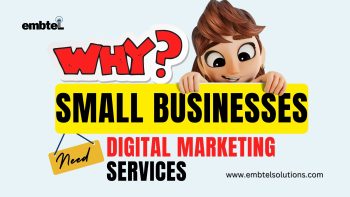Mobile advertising is the dominant type of advertising communication today. What does the area look like in 2019, and what formats do audiences participate with?
In 2014, mobile advertising spending in the United States came into an estimated $12.5 billion, roughly 25 percent of overall electronic spend. Five years later, that amount is expected to balloon to $93 billion and also consume 70 percent of electronic spend. Driven with a near-universal demand for smartphones and internet content, mobile users overwhelmingly engage with ad content using smartphones and tablets — a trend expected to last for at least another half-decade.
Instead of choosing between mobile or desktop PC platforms such as electronic advertising, today’s marketers must pick from a broad array of formats. Popular formats like video and interactive rich media have largely altered the web banners of older. Yet even within mobile advertising classes, we still struggle to ascertain which ads are suitable for our audiences.
We’ll delve deeper into the world of modern Martech to shed some light on tools and best practices used by you — our fellow entrepreneurs — in your day-to-day strategies. Each month, our experts will sink their teeth to another element of the interesting field, hopefully inspiring one to increase your business through clever marketing and mobile advertising is one of them.
Initiate a response with Mobile Advertising
Advertising formats unique for mobile devices comprise SMS text messages, in-app interstitials, push notifications, and a lot more. Mobile advertising campaigns can also encourage web-based ads traditionally created for desktop PCs, like banner ads.
There is a wide selection of mobile advertising formats, but many initiate a programmed response once a user engages together. For example, click-to-download ads in mobile advertising will route clients to the App Store, Google Play, or another cell storefront page. On smartphones, click-to-call ads automatically dial a specific number without further action on the user’s character. Other mobile advertisements might open a separate browser window to route users to a mobile webpage.
Deploy mobile advertising to Boost your Mobile Advertising Campaign
- Mobile advertising is the procedure for producing and delivering advertising content, using mobile devices as the chief point of contact. Its practices revolve around creating participating ad creatives for a specific mobile channel.
- Mobile advertising is a systematic collection of techniques and business activities that enhance audience engagement with cellular device communications, including the efficiency of mobile marketing. Mobile marketing techniques also consider methods of ad delivery (SMS advertising, push notifications), along with the digital capabilities of targeting keywords.
In short, mobile advertising is a tool that could deployed within an effective advertising campaign.
Reach a global audience with mobile devices
Mobile devices aren’t just surpassing other digital platforms, they have become the worldwide platform of choice. While overall smartphone ownership can vary, most adult inhabitants own some sort of mobile device with a global median of 43 percent. Mobile device possession is already prominent in developed countries. But smartphones are catching up in emerging economies as the principal technique of online access.
What is more, mobile advertising is 30 times more powerful than net ads for desktop computers. This is a result of a multitude of factors, including multiple advertising touchpoints, lead user response. And more personalized contextual advertising triggers.
What are the In-app ads?
In-app advertisements placed within a running app. They could incorporate any of the formats discussed in this article, but generally, pause program activity using a full-screen presentation. Smaller banner ads, click-to-call, or click-to-download apps tend to be less effective.
In 2019, in-app advertisements are the single most important advertising channel for marketers. Mobile users invest approximately 89% of their surfing time running programs making it. The most consistent place where ads can looked at. Audiences also generally have better engagement with in-app advertisements in comparison with mobile web ads. Earnings for this station predicted to grow to $1 billion by 2020.
What are the mobile-web ads?
Mobile web ads are ads deployed on internet pages which are optimized for smartphones and tablets. Many advertising formats which are traditionally utilized in a desktop setting nevertheless are generally successful here, including banner ads.
While mobile web pages seen less than apps, that doesn’t mean advertising is inefficient. One 2017 study revealed that 11% of customers interact with mobile web ads, compared to 13 percent of in-app advertisements, even as consumers spend more time in apps. Roughly 8 percent and 9% respectively would proceed to see a brand website after viewing an ad. While advertising ad spends should oriented towards in-app marketing. Which in no way means that cellular web should ignored.
What are banner ads?
Banner Ads interactive images set alongside internet or in-app articles. If a banner is clicked, it opens another web page for the product or service being advertised. In a mobile setting, these hyperlinks can also redirect to an App shop or similar storefront.
Throughout the height of desktop PC-oriented marketing, banner advertisements were king. Its prominence has diminished rapidly in the age of smartphones, because of some limited amount of screen property. The latest reports indicate that only 0.1% of customers click on banner advertisements, although strategically deployed banners may succeed in a mobile web environment.
What are native ads?
Native ads are a type of marketing created to reflect the shape and purpose of the encompassing consumer experience. For instance, social networking programs like Facebook or even Twitter set native ads as posts within normal consumer feeds. In a mobile game app, native advertisements may take the form of themed decorative costumes for in-game characters.
Native ads require more attention to detail compared to other mobile advertising formats, but frequently prompt up to 22% greater involvement.
What are the interstitial ads?
Banner ads are full-screen ads that completely cover the host app’s interface. Therefore, they most effectively deployed in-app, rather than web browser interfaces. They have a tendency to encourage involvement during downtime or natural transition points of an app stream. As an instance, interstitials are highly effective when viewed between degrees of a cell game.
In a mobile setting, interstitials can deploy pictures, videos, or any other advertisement format that pretty matches a full-screen screen.
What are mobile video ads?
Mobile video advertisements are a kind of advertising exhibited as playable videos. Generally they set up as in-app interstitials but may also used in within the port of a cell web page. Mobile video now ranks as one of the best advertisement formats and is expected to outpace all conventional ad spending by 2020.
One particularly promising subset of mobile video advertisements rewarded movie. This arrangement integrated with an app’s SDK to provide some sort of advantage when users see its ad content. This puts clients in complete charge of their consumer experience because they can participate with ads in their schedule. Most commonly utilized in gaming programs to unlock premium content but have recently started appearing in entertainment and retail app categories too.
Optimize your campaign with programmatic advertising
Programmatic advertising denotes the practice of automatically getting and selling ad content. Although not exclusive to mobile, programmatic ads can economically purchased and managed using a single digital platform. Lots of programmatic solutions also allow marketers to target section audiences to guarantee each ad is paired with its most receptive customers.
Programmatic ads have grown in popularity and are projected to reach $45 billion in advertising spending this year. They’re also typically cheaper than manually-assigned ads and allow easy accessibility to your new ad inventory. That being said, cheap doesn’t necessarily mean cheap — smaller publishers might struggle to achieve cost thresholds. There’s never a guarantee that ad inventory going to sold, meaning additional effort is required to create open ad space appealing.
In 2019, the amount of mobile advertising choices has proliferated by an incredible degree. When coupled with the advertising formats mentioned in last week’s post, there are more methods to communicate with clients than ever before — and much more could emerge in 2020. Whatever the situation, cellular marketers, advertisers. And publishers should stay conscious of where customers highly engaged and adapt their ad spend accordingly.
*Our Agency is also offering Digital Marketing* so please contact us by using the “Schedule a free 20-minute consultation” Call +1(510) 585-6585 OR Just drop a mail on [email protected]
Read More Blogs





